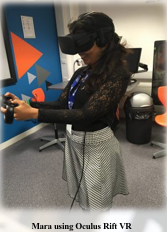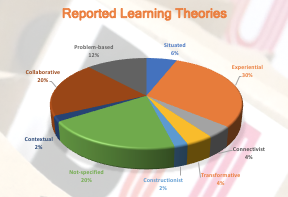I am Heidi Singleton, a BU PGR with CEL. I joined in September 2017 and am at the Initial Review stage of my PhD. My supervisors are Debbie Holley, Jaqueline Priego and Liz Falconer. Here is a summary of my research so far…
My PhD is researching…
-how to design and operationalise a flipped learning framework using VR and other low-cost tools and evaluate the learning potential for sustainable and scalable student learning
– how VR technologies can be harnessed in a lecture theatre setting with 150 nursing students to enable a better grasp of complex concepts (in this case DKA, HHS and hypoglycaemia- all acute emergencies of diabetes- definitions at end of post)
I am researching this because…
-students cannot always be training on medical wards or other settings relevant to their learning
– when they learn in the classroom, complex concepts can be difficult for students to understand and retain
-they pay for their course and expect engaging and innovative learning
-the incidence of diabetes is rising, so nurses must be prepared to spot symptoms and know treatment choices
Theory tells me that…
-VR aligns well with situated learning- through which, connections between complex real-world situations and classroom experiences can be developed
– the context with VR learning scenario is crucial. The specific features of VR contextual learning have brought the educational potential that the traditional classroom would never have
What I have found so far…
– rapid evolution of VR technologies has not been accompanied by the appraisal of their effectiveness for student-centred learning
– research indicating strong student engagement, but often relying on self-report for learning outcomes
– VR technology has not yet become embedded into curricula; there remains a lack of clarity concerning the underpinning theories and instructional design aspects
The gaps seem to be …
-20th Century learning theories continue to prevail (yet there are more suitable 21st Century approaches e.g. Connectivism and Heutagogy)
-most evaluation of VR learning relies upon self-report
-few studies used a control or pre-testing
-using VR in classroom settings in scalable and sustainable ways
What I will do…
-next step is to develop the methodology and method
-explore VR technology, as the characteristics or VR seem to lend themselves better to this project than AR (see end for definitions of both)
-help to write the new diabetes curriculum with the course leader (Dr Janet James and a Nurse Specialist from RBCH), including team-based learning case studies
-liaise with a software company to turn the case studies into a VR app
-test the pilot VR app with CEL colleagues and RBCH nurses
-implement and evaluate the innovation with nursing students
Expected Impact…
– the model generated by this project will be transferable to different learning contexts for example: nursing homes, hospitals and the community as well as lectures for other disciplines (they will be able to use their own virtual case studies)
-trainee nurses should have a better understanding of DKS/HHS and hypoglycaemia through using VR case studies- this should aid patient care
Please feel free to contact me if you have any questions.
You can follow me at @blueprintteacher and CEL at @cel_bu
Definitions:
VR
-is a computer-generated simulation or a replacement of one’s environment. For example, you put on a headset like Oculus Rift, it blocks out your world view and substitutes a digital world that is designed to fool your senses. VR tends to be completely immersive with no real-world stimuli effecting the experience.

AR
-its main purpose isn’t to cut out the real world and transport you to another one. Rather it is to be a digital addition to your real world with a set of virtual objects in. When a person’s real environment is supplemented or augmented with computer generated images, usually motioned tracked; then that’s augmented reality (e.g. Pokemon go, snapchat, Hololens etc). Augment is from the latin word “Augere” to increase or add. Hence, augmented technology is adding to our existing reality.
DKA-
Consistently high blood glucose levels can lead to a condition called diabetic ketoacidosis (DKA). This happens when a severe lack of insulin means the body cannot use glucose for energy, and the body starts to break down other body tissue as an alternative energy source. Ketones are the by-product of this process. Ketones are poisonous chemicals which build up and, if left unchecked, will cause the body to become acidic – hence the name ‘acidosis’.
HHS-
Hyperosmolar Hyperglycaemic State occurs in people with Type 2 diabetes who experience very high blood glucose levels (often over 40mmol/l). It can develop over a course of weeks through a combination of illness (e.g.infection) and dehydration.
Hypoglycaemia-
occurs when blood glucose levels fall below 4 mmol/L (72mg/dL). Whilst many of us think of diabetes as being a problem of high blood sugar levels, the medication some people with diabetes take medication that can also cause their sugar levels to go too low and this can become dangerous.









